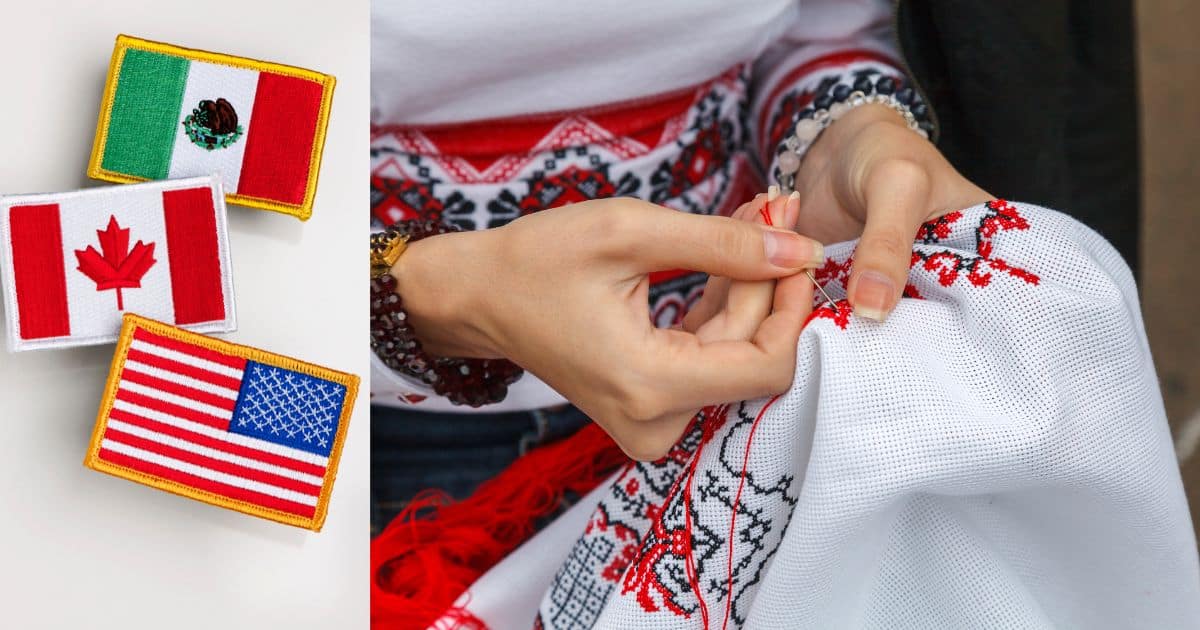How To Remove Embroidered Logo
(3 Quick Steps Guide)
Embroidery is an incredible method to add style and detail to a piece of clothing. But if need to alter your perspective on the plan, you’ll need to remove the embroidery from the piece of garment.
Fortunately, this is easy to do. let us tell you here how can you unstick an embroidered patch from a piece of clothing following a few quick steps.
Tools Required
- Seam ripper
- Tweezer
- Project scissor
In this blog, we will cover both types of embroidery for a better guide. Let’s begin with uncovering the handmade embroidery from a shirt.
Removing Hand Embroidery From Shirt
- STEP 1
Turn the shirt back to the front, so the rear of the weaved area is uncovered. Slide your hand inside the shirt. So, the segment of fastens is lying on your palm.
- STEP 2
Take the seam ripper and delicately slide it under a little part of lines (five to six). Delicately push the crease ripper forward, so it cuts the lines.
- STEP 3
Turn the shirt right-side out and use the tweezers to haul each string out. Quit pulling if there is any obstruction.
Repeat steps 1,2 & 3, working in little areas. You can use the amplifying glass if you get to a detailed segment and need to characterize where the fastens cover.
Now you can use the set of tweezers and scrub brush to remove the unwanted strings after you have removed the embroidery joints.
Removing Machine Embroidery From Jacket
Removing machine embroidery is fundamentally the same as removing handstitched embroidery.
However, it’s a small digit complex. You will require comparative tools and should complete a comparative cycle with little changes.
Start the cycle a similar way you would if you were taking out handstitched embroidery.
- STEP 1
Turn the apparel thing back to the front, slide your hand inside, and have the weaved part rest in your palm.
- STEP 2
Next, look for a white bobbin string; it could be a little dubious as the fastens are a lot more modest than the lines of handstitched embroidery.
- STEP 3
When you spot it, embed the crease ripper in a similar way as in the past. This time, you will go under 30-40 lines without a moment’s delay.
Extra Tips
- Always make sure to wash your hands before beginning the work to try not to recolor the texture, particularly when you’re dealing with blurring the line checks.
- Don’t use tape to remove the strings from textures, for example, chenille embroidery or velvet.
- If you are regularly removing machine embroidery from ventures, you can put resources into an electric fasten remover. It will make employment substantially less tedious.
- You can use a needle and string to darn a little opening made by a seam ripper.
- Use a couple of tweezers with an appended amplifying glass to assist you with seeing unmistakably.
Removing embroidery patches is regularly taken a gander at as a troublesome task to pull off. But we believe now that at this point, you realize how easy and simple it truly is.
This is the simplest way to de-embroidering a logo from a shirt, coat, and jacket. Plus, it prevents fabric damage and helps you remove ripples from an embroidered patch.
FINAL ADVICE
Now you get rid of unwanted embroidery on clothing, it’s time to revamp with new ones. Patch Mania is the best quality custom-made patch manufacturer in the U.S. We provide free digital files before processing orders with no delivery cost at all.
For online help with quotes and embroidery issues, you can always talk to our quick reps. Get your customized embroidery patch at your doorstep within 10 working days now.




